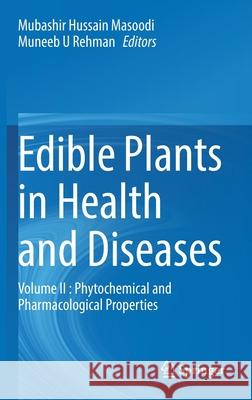Edible Plants in Health and Diseases: Volume II: Phytochemical and Pharmacological Properties » książka
topmenu
Edible Plants in Health and Diseases: Volume II: Phytochemical and Pharmacological Properties
ISBN-13: 9789811649585 / Angielski / Twarda / 2022 / 390 str.
Kategorie BISAC:
Wydawca:
Springer
Język:
Angielski
ISBN-13:
9789811649585
Rok wydania:
2022
Wydanie:
2021
Ilość stron:
390
Waga:
0.91 kg
Wymiary:
23.39 x 15.6 x 2.87
Oprawa:
Twarda
Wolumenów:
01
Dodatkowe informacje:
Wydanie ilustrowane











